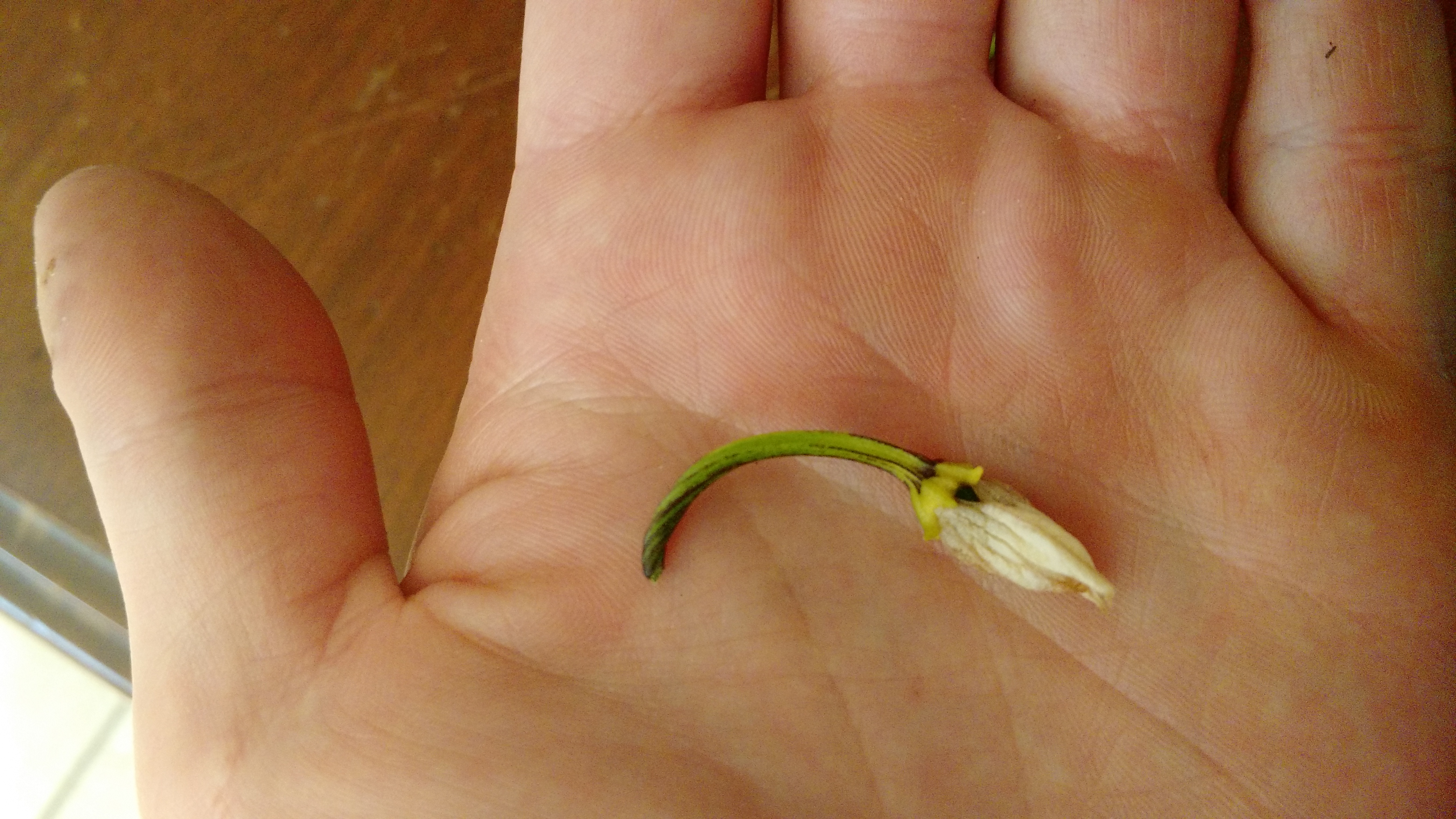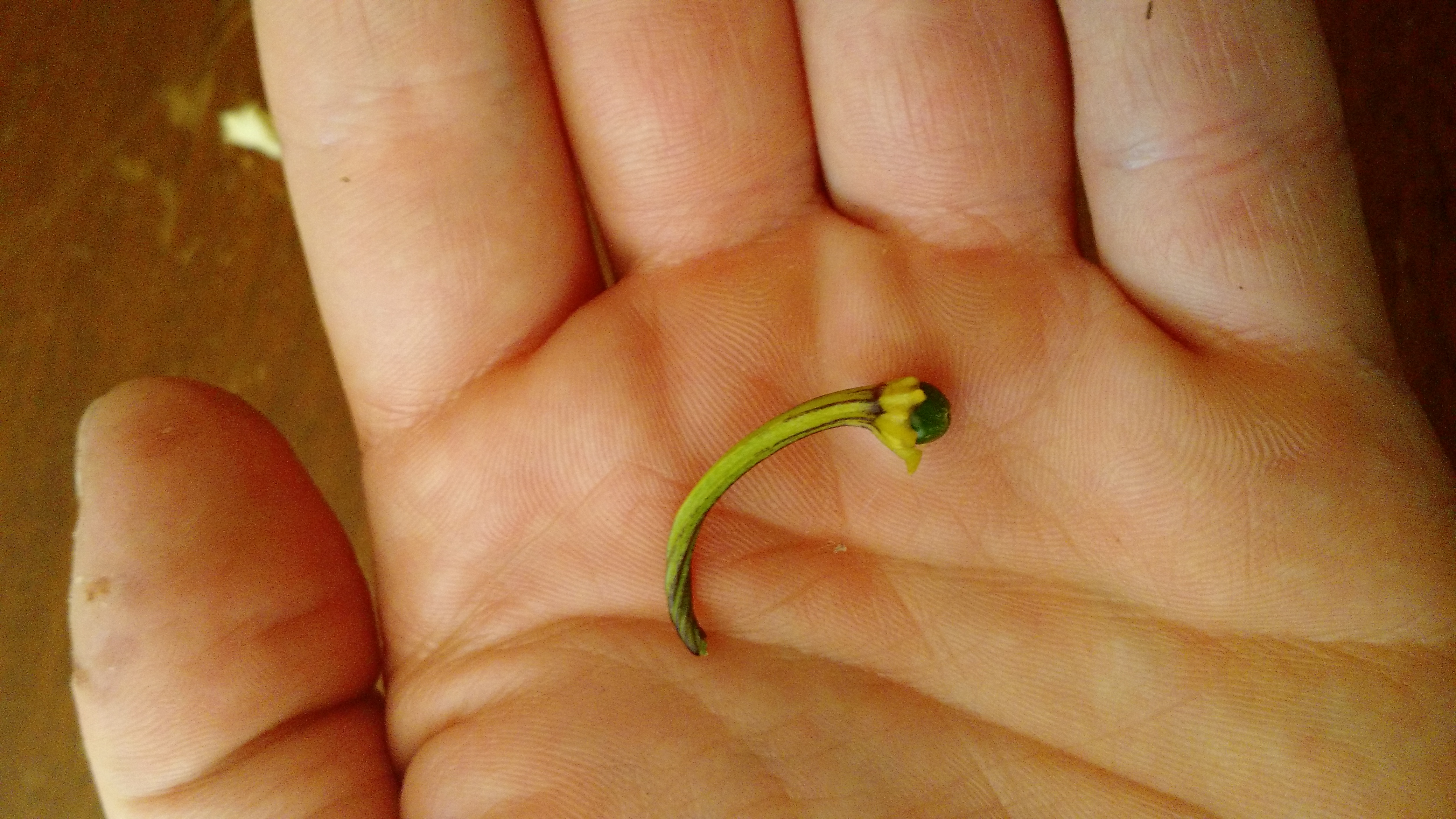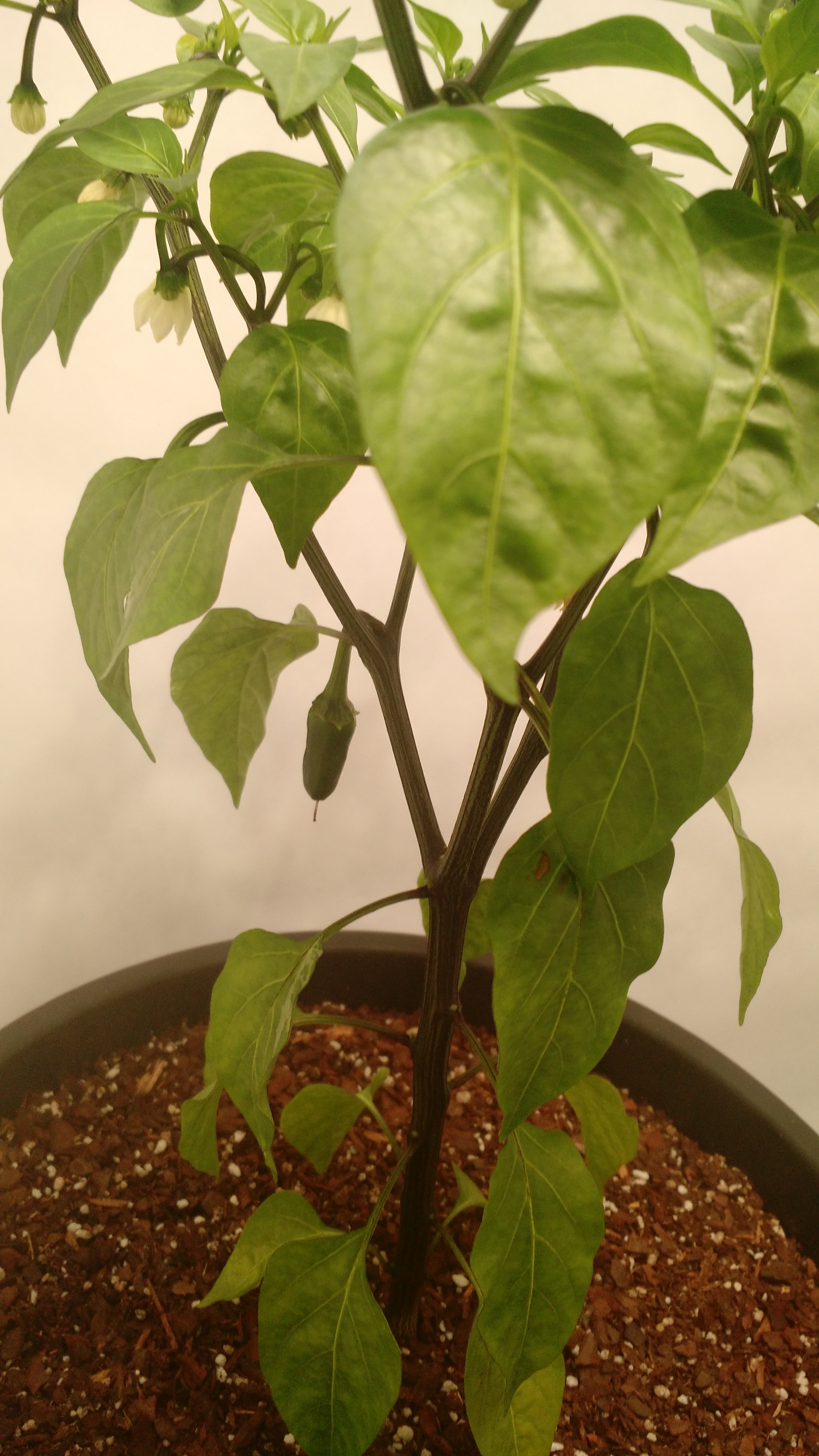Hello,
I've been growing some jalapeños indoors under lights, and it has been going well so far. But in the past few days, the flowers/new pods on one of the plants have been yellowing slightly and then dropping off the plant, stem and all, if the plant is jostled even a tiny bit.
Daytime temperatures are steady around 73°.
Nighttime temperatures are similarly steady around 68°.
Relative humidity is kept between 60% and 70%.
Light intensity is quite high, at 30+ DLI from 16 hours/day under a ceramic metal halide.
The plant in question also has a couple other pods that are doing perfectly fine.
The plant itself has good color, and is not showing any signs of distress that I can see. It is flowering plentifully.
And there is another jalapeño of the exact same type and size growing next to it under the exact same conditions that has not dropped any flowers/new pods.
Picture of what dropped:

With the flower petals removed (it looks like it had pollinated and a pod was starting to grow) :

And a picture of the plant showing one of the healthy pods:

Any ideas?
I've been growing some jalapeños indoors under lights, and it has been going well so far. But in the past few days, the flowers/new pods on one of the plants have been yellowing slightly and then dropping off the plant, stem and all, if the plant is jostled even a tiny bit.
Daytime temperatures are steady around 73°.
Nighttime temperatures are similarly steady around 68°.
Relative humidity is kept between 60% and 70%.
Light intensity is quite high, at 30+ DLI from 16 hours/day under a ceramic metal halide.
The plant in question also has a couple other pods that are doing perfectly fine.
The plant itself has good color, and is not showing any signs of distress that I can see. It is flowering plentifully.
And there is another jalapeño of the exact same type and size growing next to it under the exact same conditions that has not dropped any flowers/new pods.
Picture of what dropped:

With the flower petals removed (it looks like it had pollinated and a pod was starting to grow) :

And a picture of the plant showing one of the healthy pods:

Any ideas?
